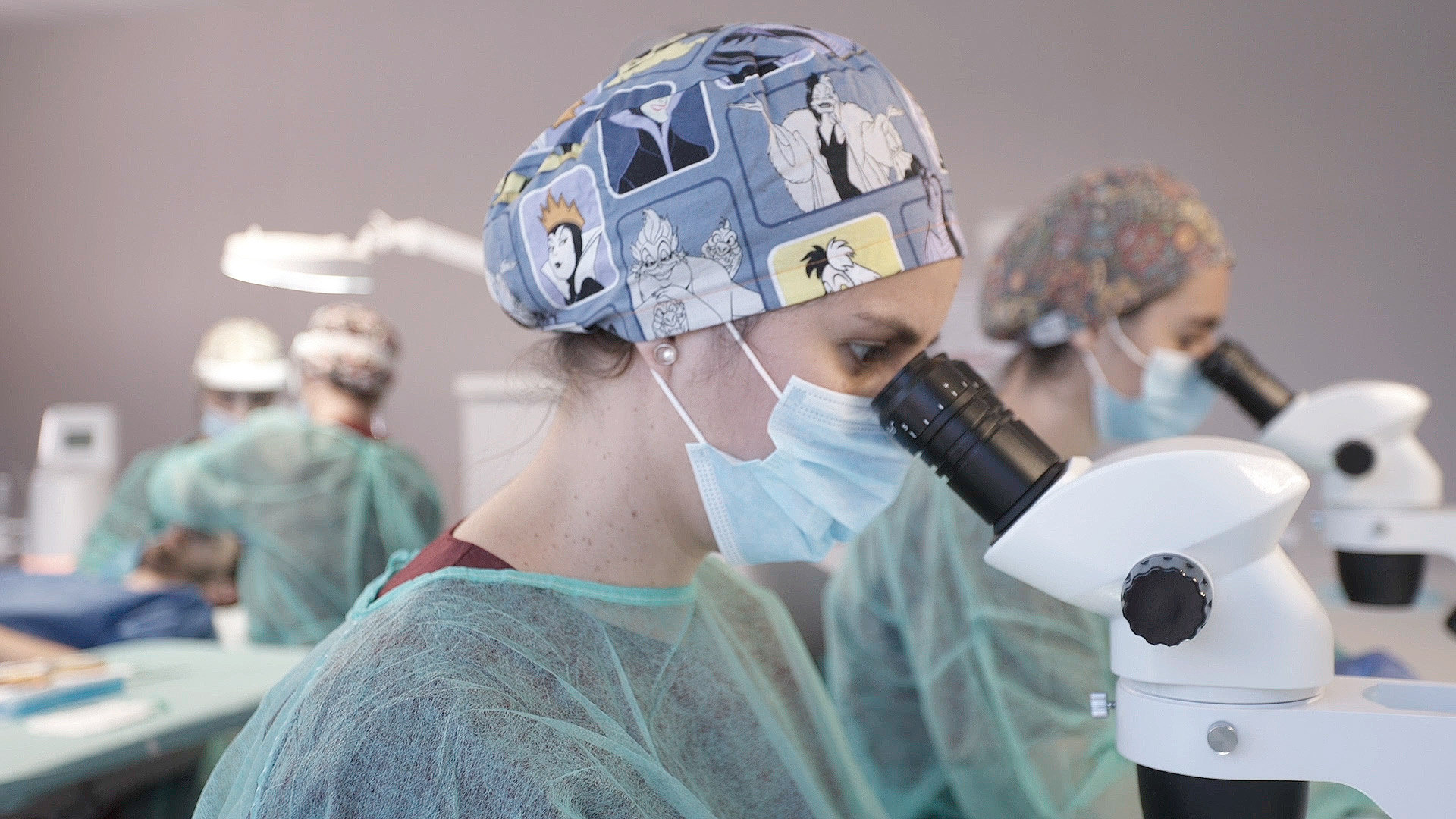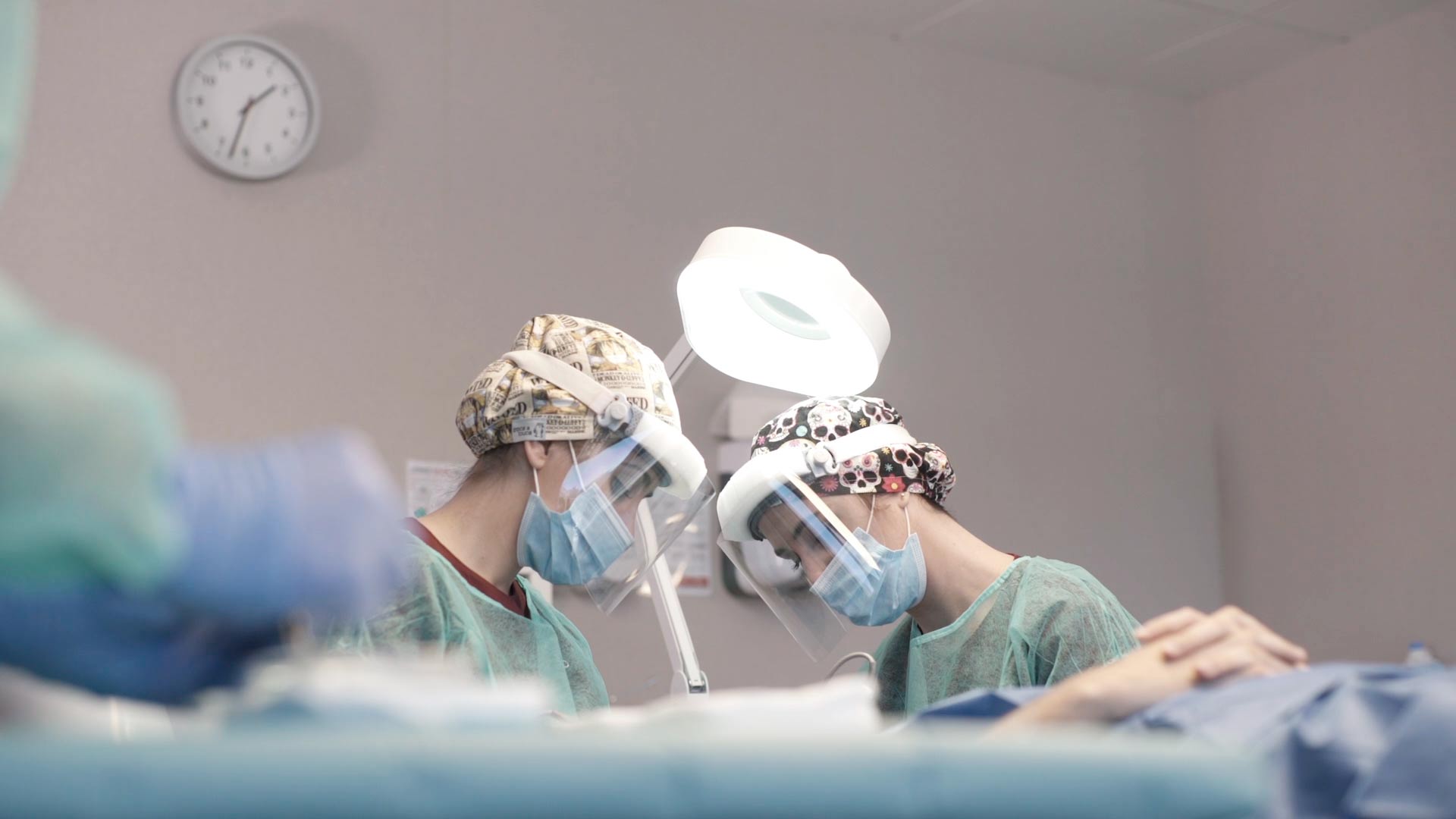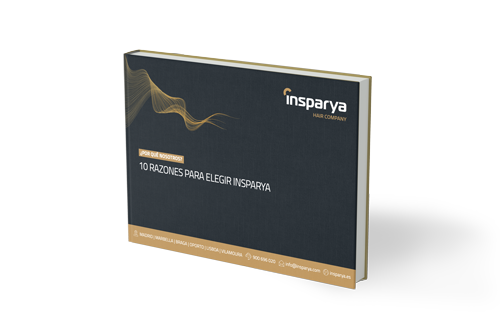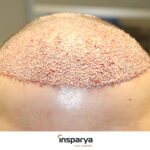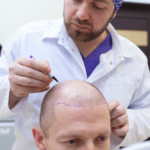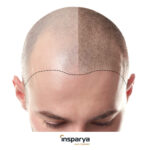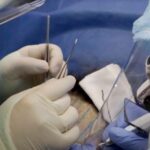
¿Cuáles son las técnicas de trasplante capilar?
Actualmente existen dos métodos principales de trasplante capilar: FUSS (Follicular Unit Strip Surgery) y FUE (Follicular Extraction Unit).
El método FUSS de trasplante capilar consiste en extraer una tira de piel con folículos pilosos de la zona donante, donde el pelo es naturalmente más denso y menos propenso a caerse. Tras retirar esta tira de piel, se sutura, creando una cicatriz lineal. De esta piel se extraen pequeños grupos de tejido que contienen unidades foliculares y se preparan para el trasplante. Mientras esto se lleva a cabo, se realizan pequeñas incisiones individuales en la zona receptora donde se produce la calvicie. A continuación, las unidades foliculares separadas de la tira de piel extraída se colocan individualmente en la zona receptora.
La técnica de trasplante capilar FUE se desarrolló para obtener los mismos resultados que la FUSS, sin tener que afrontar sus desventajas, es decir, la cicatriz lineal resultante, que a menudo resulta antiestética.
La FUE también consiste en tomar unidades foliculares de una zona donante de la parte posterior o lateral de la cabeza y transferirlas a zonas calvas para reconstruir esa zona, logrando un resultado natural.
Con la FUE, esta extirpación se realiza de forma cuidadosa e individualizada, extrayendo las unidades foliculares una a una, con microincisiones de muy pequeño diámetro, sin dejar una cicatriz lineal visible como en la técnica anterior.
Por lo tanto, algunas de las ventajas de la FUE sobre la FUSS son la eliminación de la cicatriz lineal y la no necesidad de tratar y vendar la herida, así como la reducción del tiempo de inactividad tras la intervención, disminuyendo los niveles de incomodidad de los pacientes en los días posteriores al procedimiento.
Si la técnica FUE es realizada por un equipo clínico experimentado y con tecnología avanzada como BotHair® UltraPlus Insparya, el riesgo de dañar las unidades foliculares queda absolutamente minimizado.


